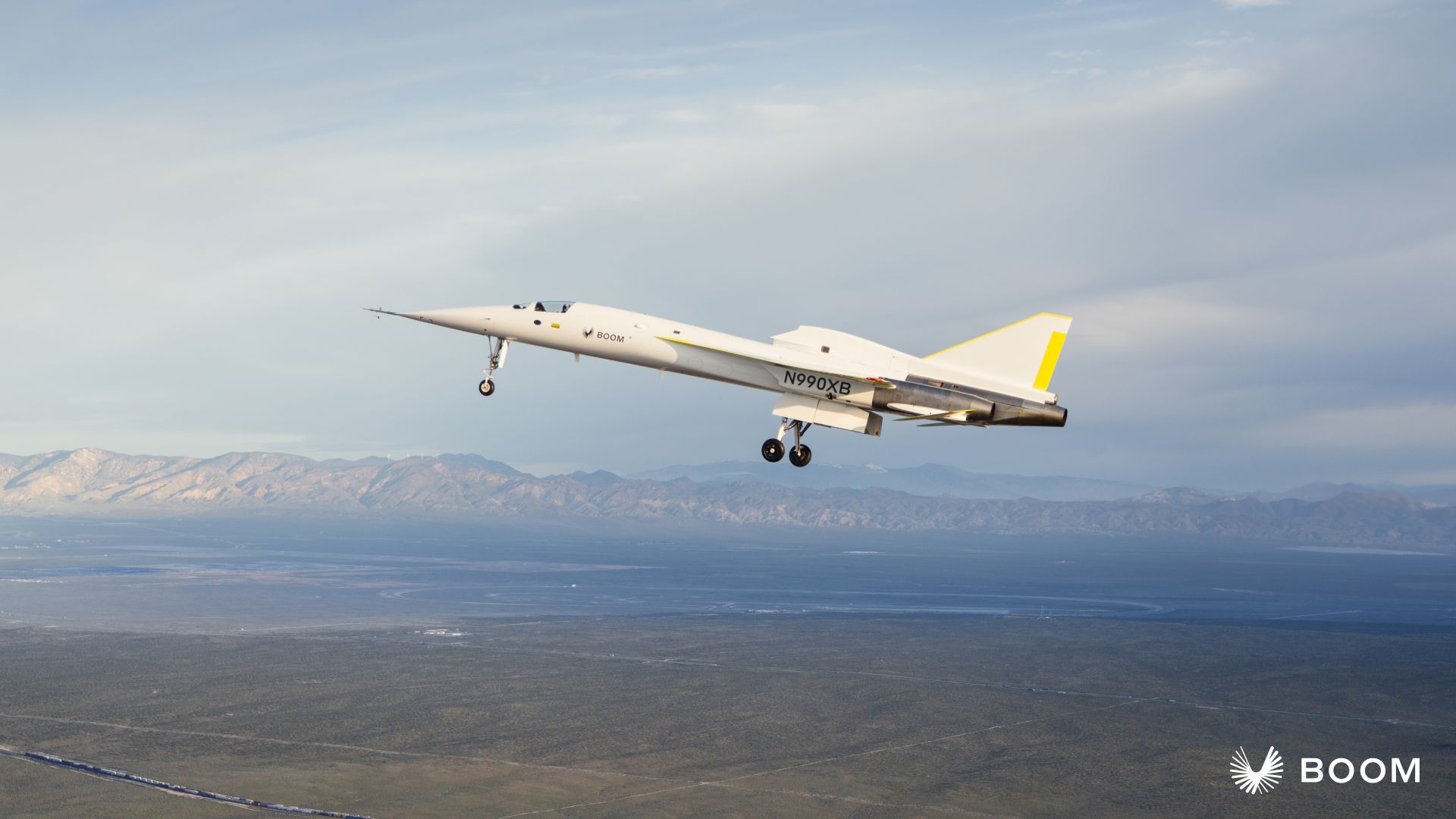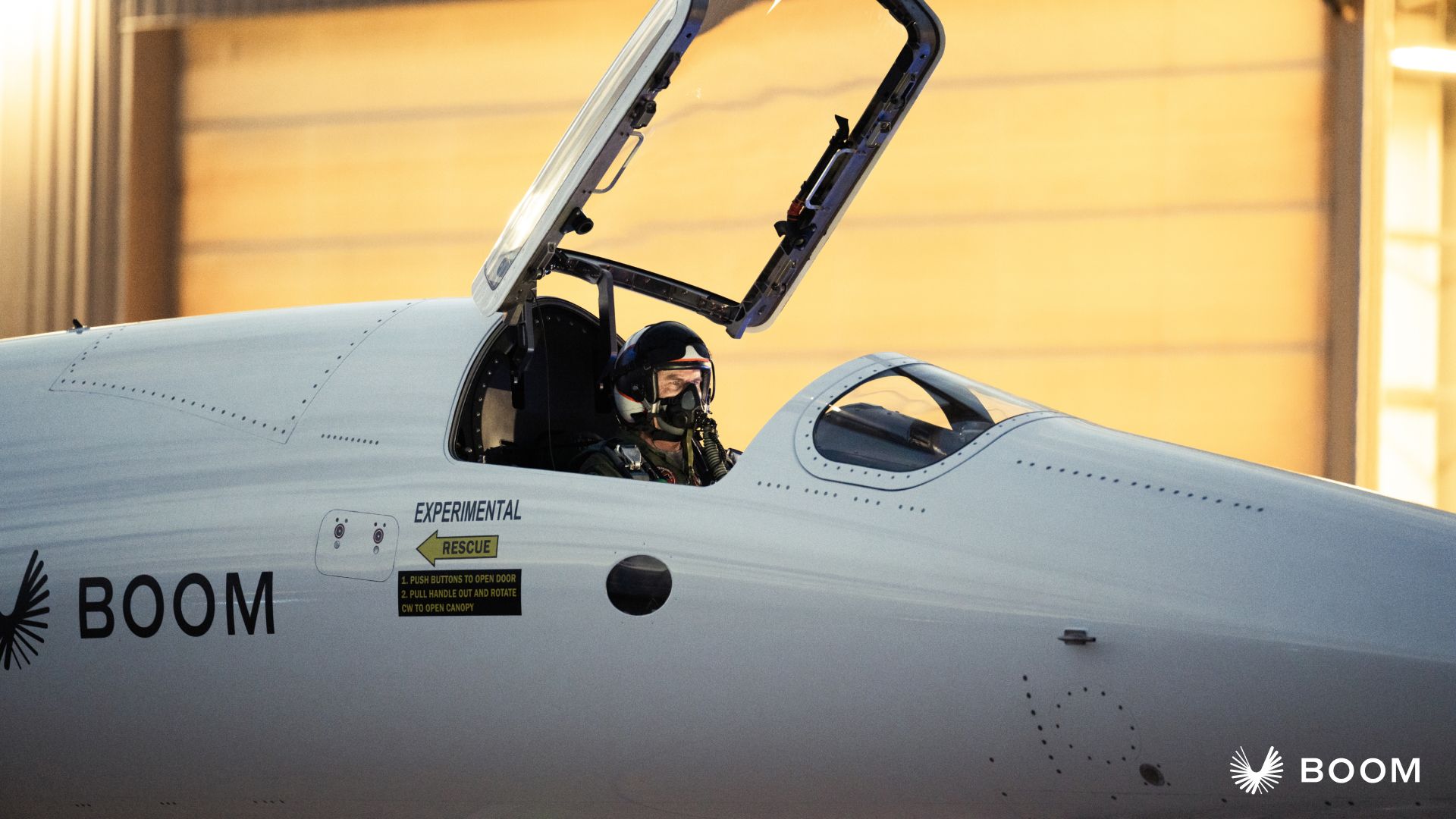Boom! The XB-1 Demonstrator Completed its First Successful Flight on Friday (Mar. 22)
(Mojave, California & Denver, Colorado) This Friday, March 22nd, Boom Supersonic - the company in the process of building the world’s fastest airliner, Overture - announced the successful first flight of its XB-1 demonstrator aircraft, which has been dubbed by Boom as the world’s first independently developed supersonic jet, at the Mojave Air & Space Port in Mojave, California.

Photo of Boom Supersonic’s XB-1 demonstrator taking off on Friday, March 22nd, courtesy of Boom Supersonic.
Per Friday’s press release from Boom, similar to the forthcoming Overture airliner, XB-1 leverages state-of-the-art technologies to enable efficient supersonic flight including carbon fiber composites, advanced avionics, digitally-optimized aerodynamics, and an advanced supersonic propulsion system.
“Today, XB-1 took flight in the same hallowed airspace where the Bell X-1 first broke the sound barrier in 1947,” said Blake Scholl, Founder and CEO of Boom Supersonic, in Friday's press release. “I’ve been looking forward to this flight since founding Boom in 2014, and it marks the most significant milestone yet on our path to bring supersonic travel to passengers worldwide.”
XB-1 was flown by Boom Chief Test Pilot Bill “Doc” Shoemaker, and Test Pilot Tristan “Geppetto” Brandenburg flew the T-38 chase aircraft which monitored the flight; XB-1 took off from the Mojave Air & Space Port and met all of its test objectives, including safely and successfully achieving an altitude of 7,120 feet and speeds up to 238 knots (273 mph), according to the press release.

Boom Chief Test Pilot Bill "Doc" Shoemaker in the XB-1's flight deck on Friday, March 22nd, courtesy of Boom Supersonic.
Boom’s forthcoming Overture prototype is scheduled to roll out in 2026, with first flight currently targeted for 2027 and entry-into-service planned for 2030, according to Aviation Week.
Overture’s order book currently includes 130 orders and pre-orders from American Airlines, United Airlines and Japan Airlines.
Two decades after the retirement of the supersonic Concorde, Boom Supersonic intends to pave the way for the revival of mainstream supersonic travel, according to the company.
Today’s press release reads that “XB-1 validates key technologies and innovations, including:
- Augmented reality vision system: Two nose-mounted cameras, digitally augmented with attitude and flight path indications, feed a high resolution pilot display enabling excellent runway visibility. This system enables improved aerodynamic efficiency without the weight and complexity of a movable nose.
- Digitally-optimized aerodynamics: Engineers used computational fluid dynamics simulations to explore thousands of designs for XB-1. The result is an optimized design that combines safe and stable operation at takeoff and landing with efficiency at supersonic speeds.
- Carbon fiber composites: XB-1 is almost entirely made from carbon fiber composite materials, enabling it to realize a sophisticated aerodynamic design in a strong, lightweight structure.
- Supersonic intakes: XB-1’s engine intakes slow supersonic air to subsonic speeds, efficiently converting kinetic energy into pressure energy, allowing conventional jet engines to power XB-1 from takeoff through supersonic flight.”

Photo of Boom Supersonic’s XB-1 demonstrator on the runway at Mojave Air & Space port, courtesy of Boom Supersonic.
Overture’s specs are as follows, per Boom Supersonic’s website:
- Cruise Speed: Mach 1.7 ** Overture will fly 2x faster than subsonic (ordinary) airliners over water and 20% faster than subsonic airliners over land
- Capbilities: 100% SAF - Boom is optimized for net zero carbon
- Length: 201 feet nose to tail
- Cruising Altitude: 60,000 feet
- Max Range: 4250 nautical miles (4888 miles / 7867 km)
- Passenger Capacity: 64-80 pax
